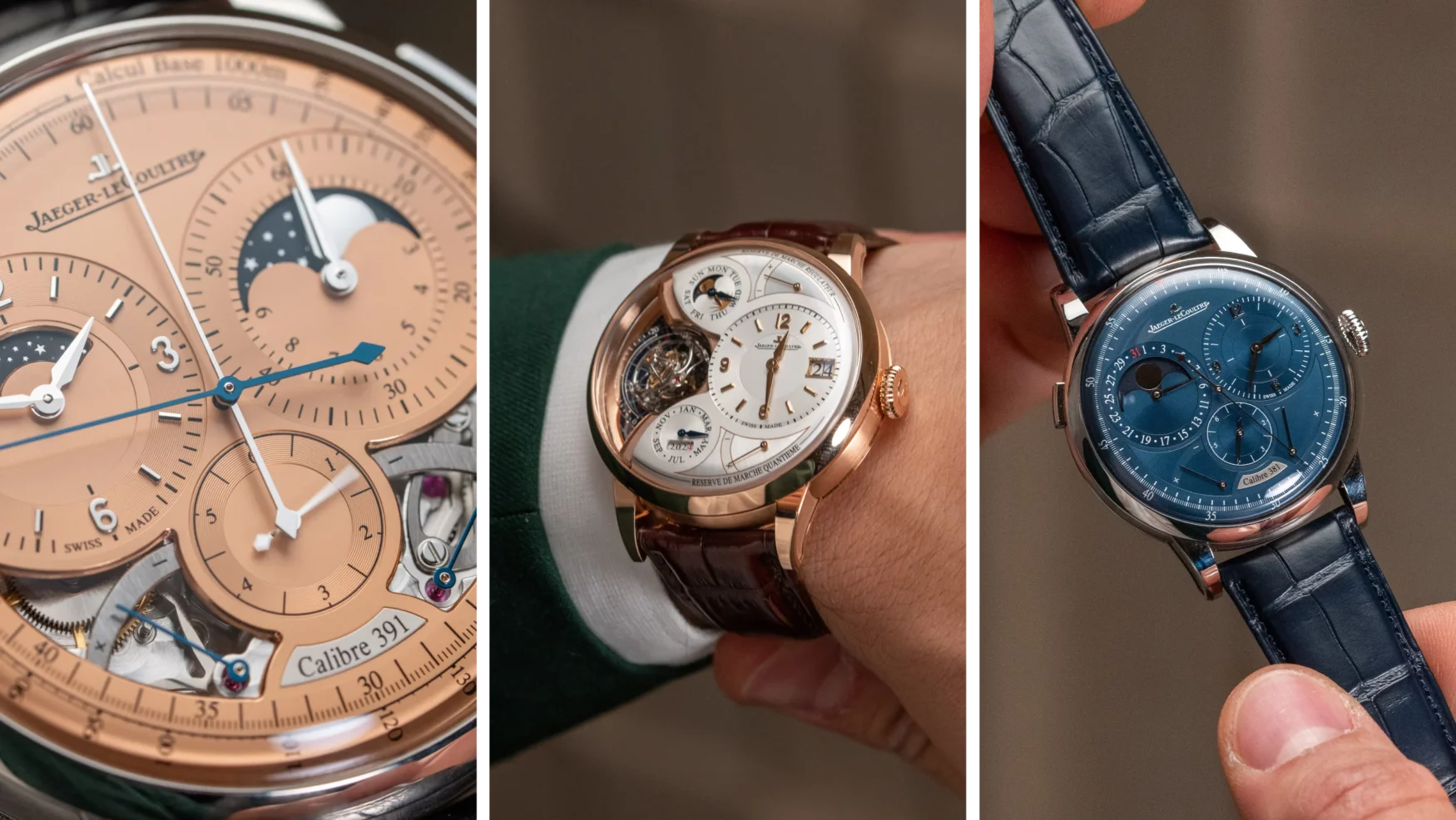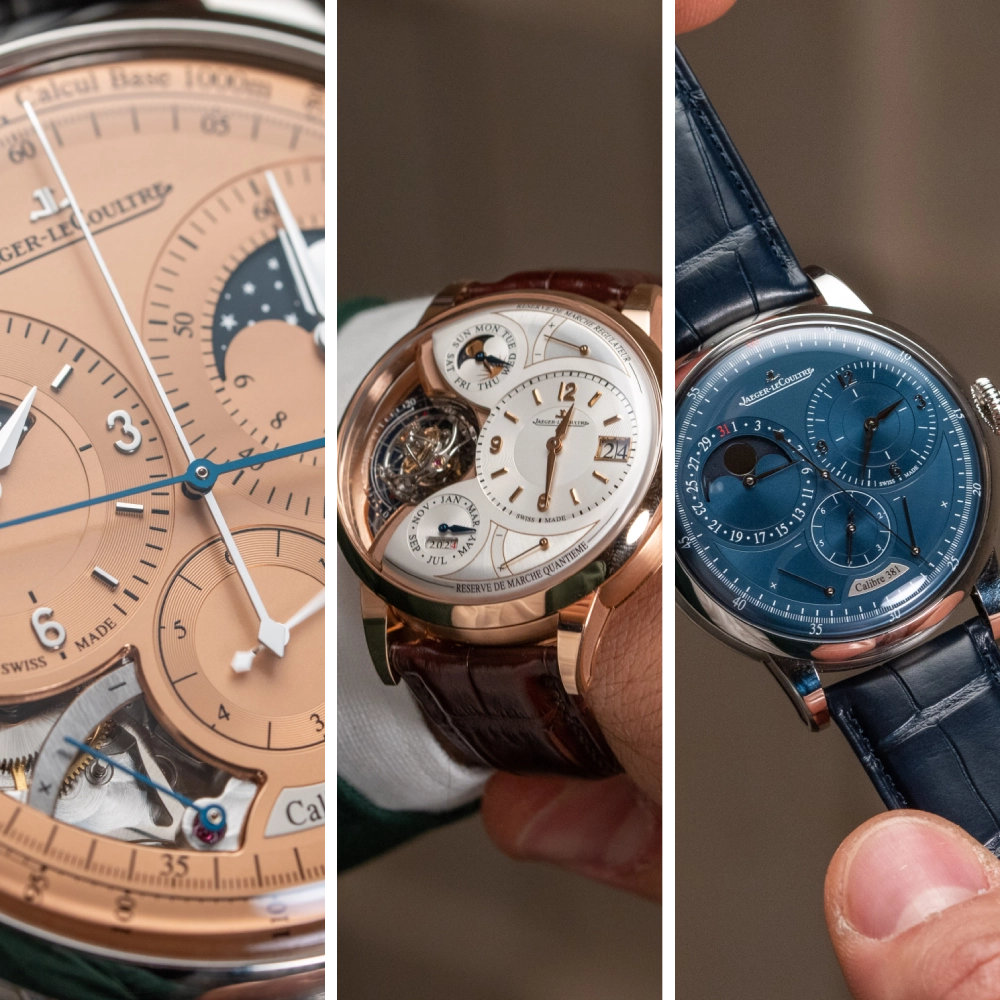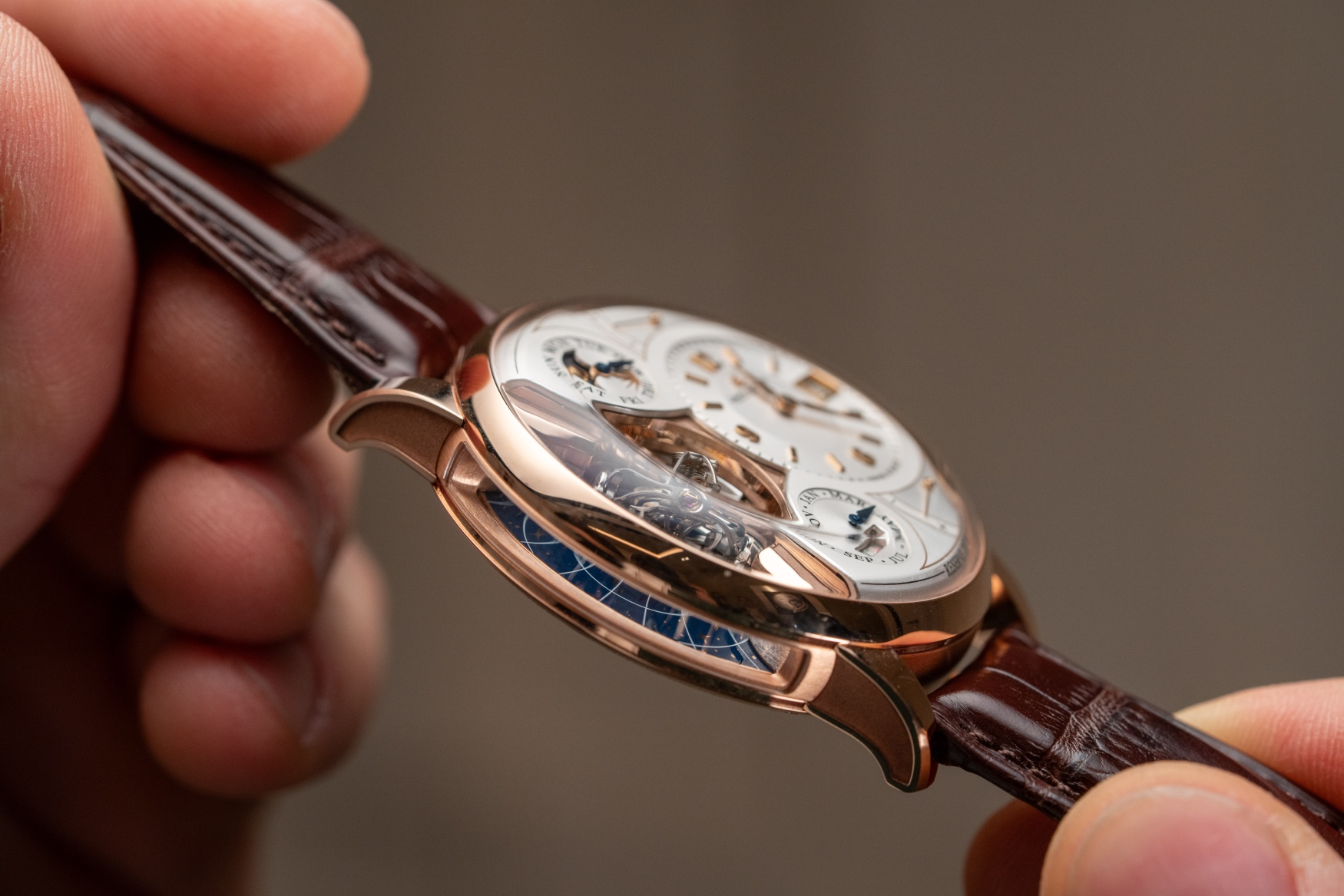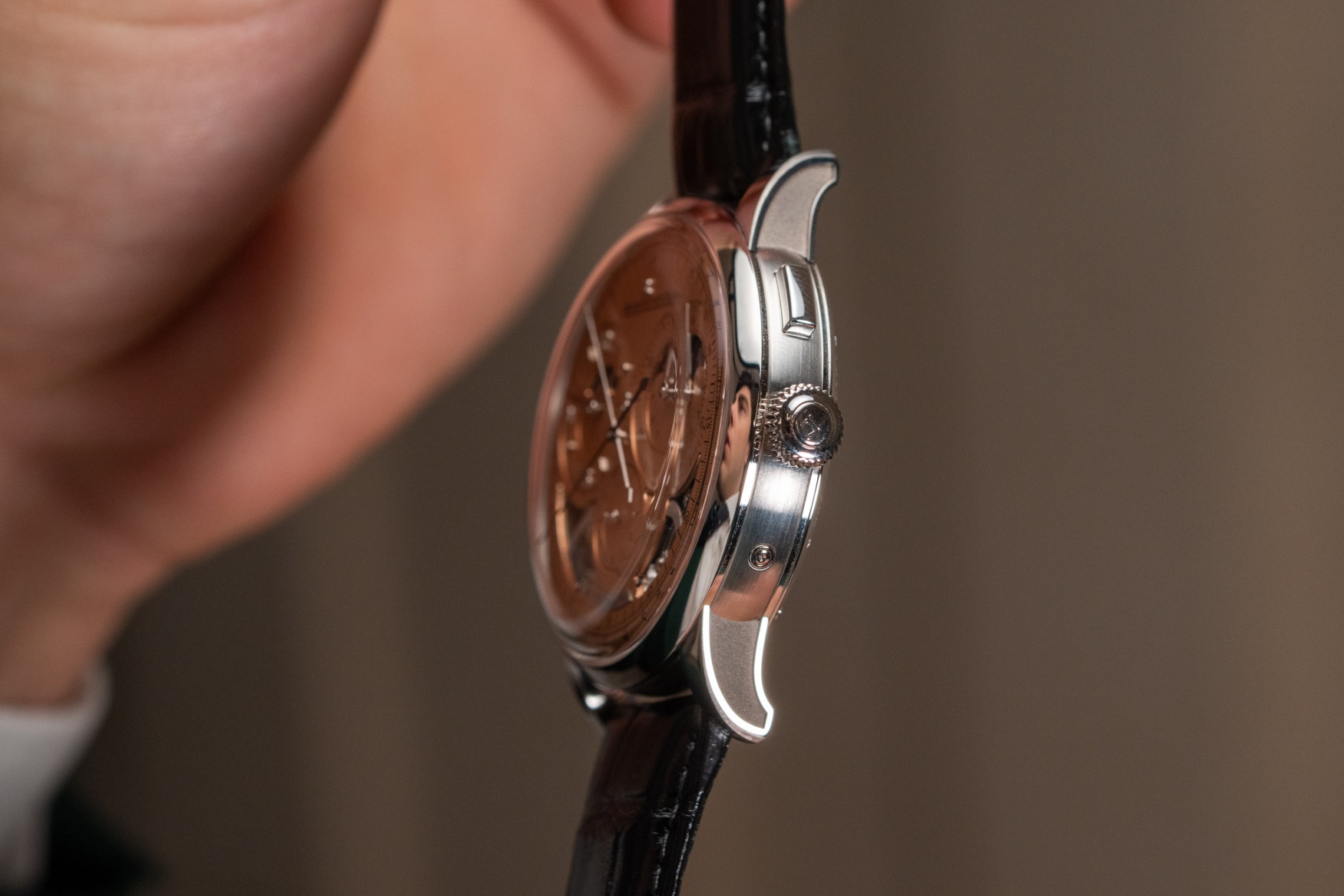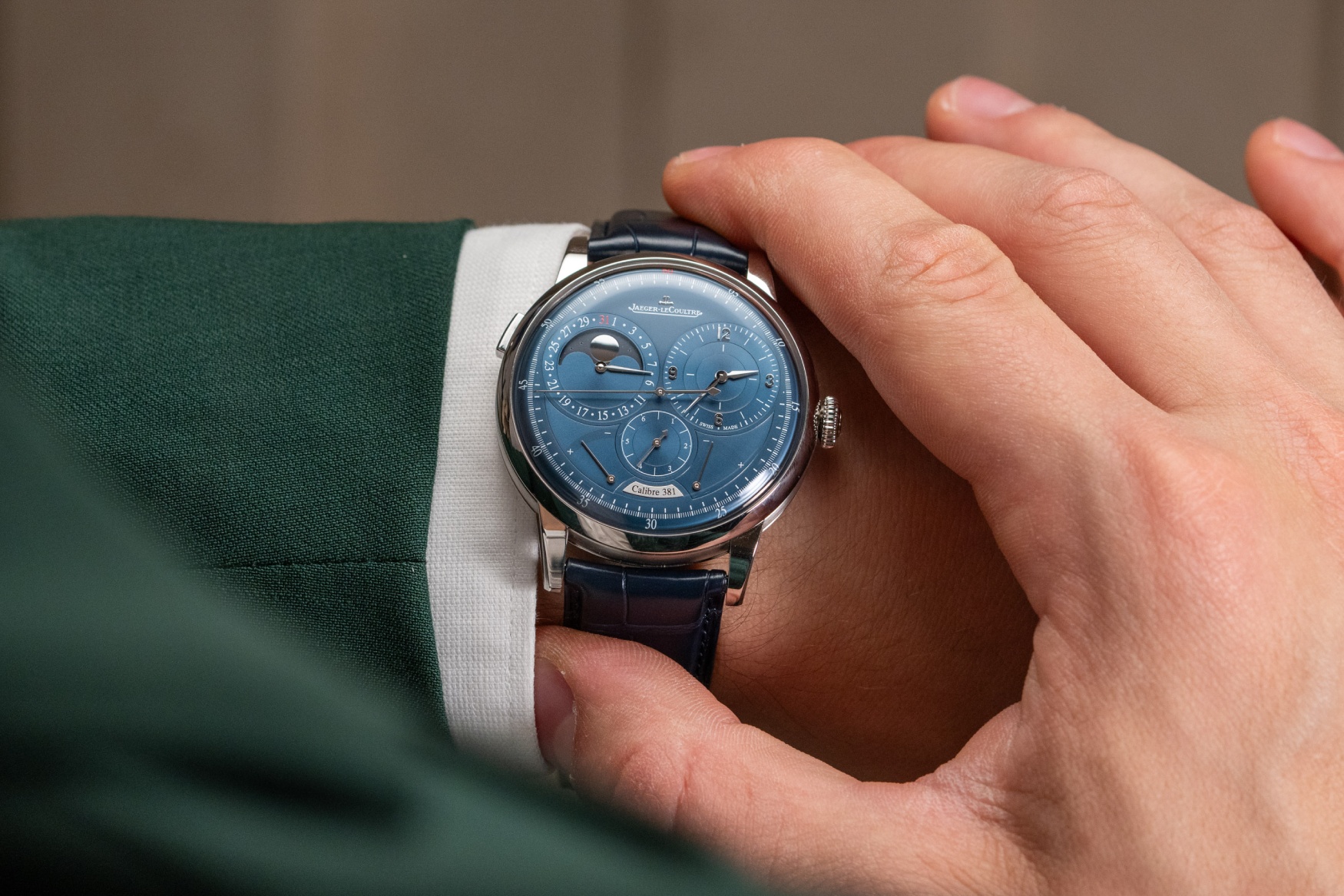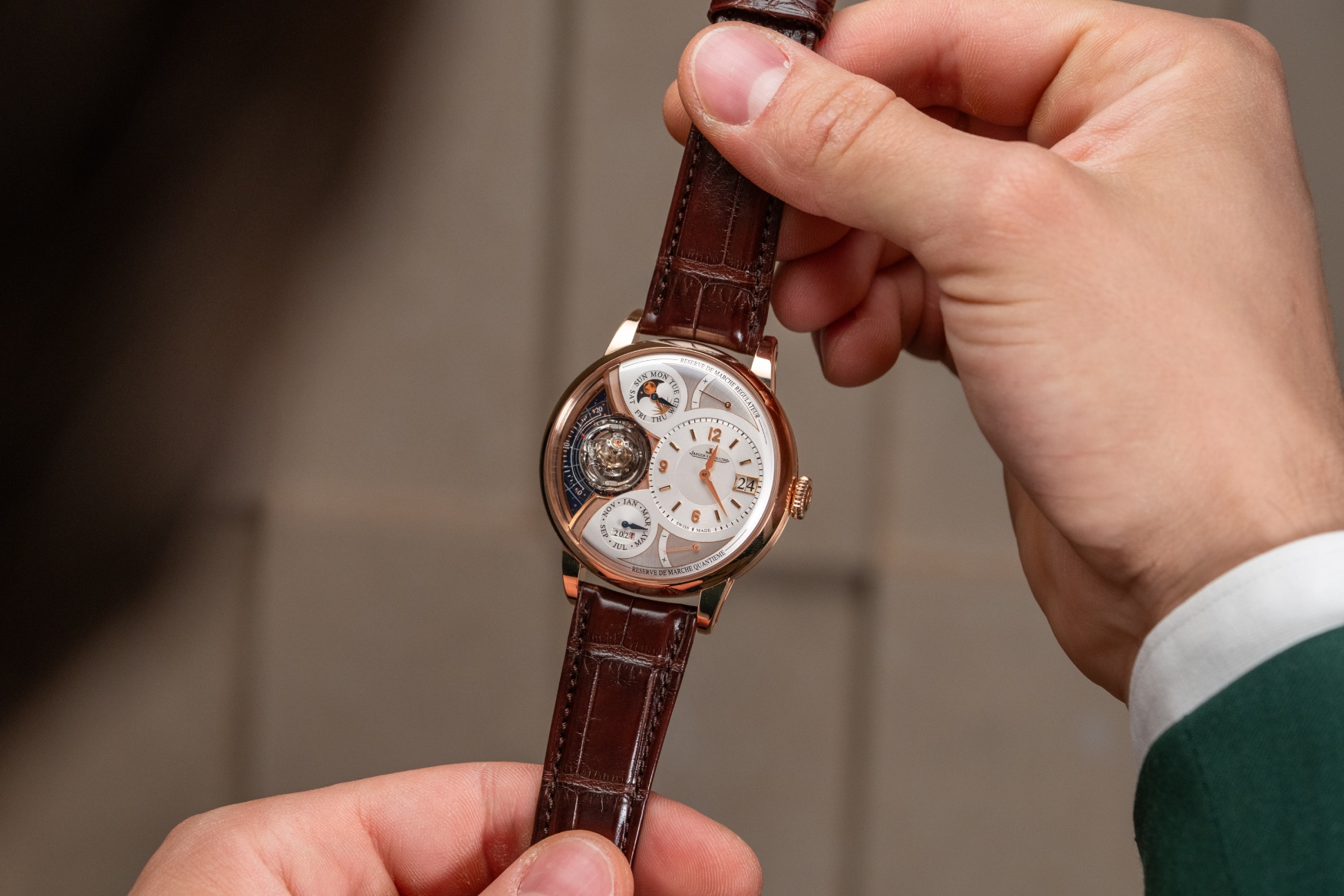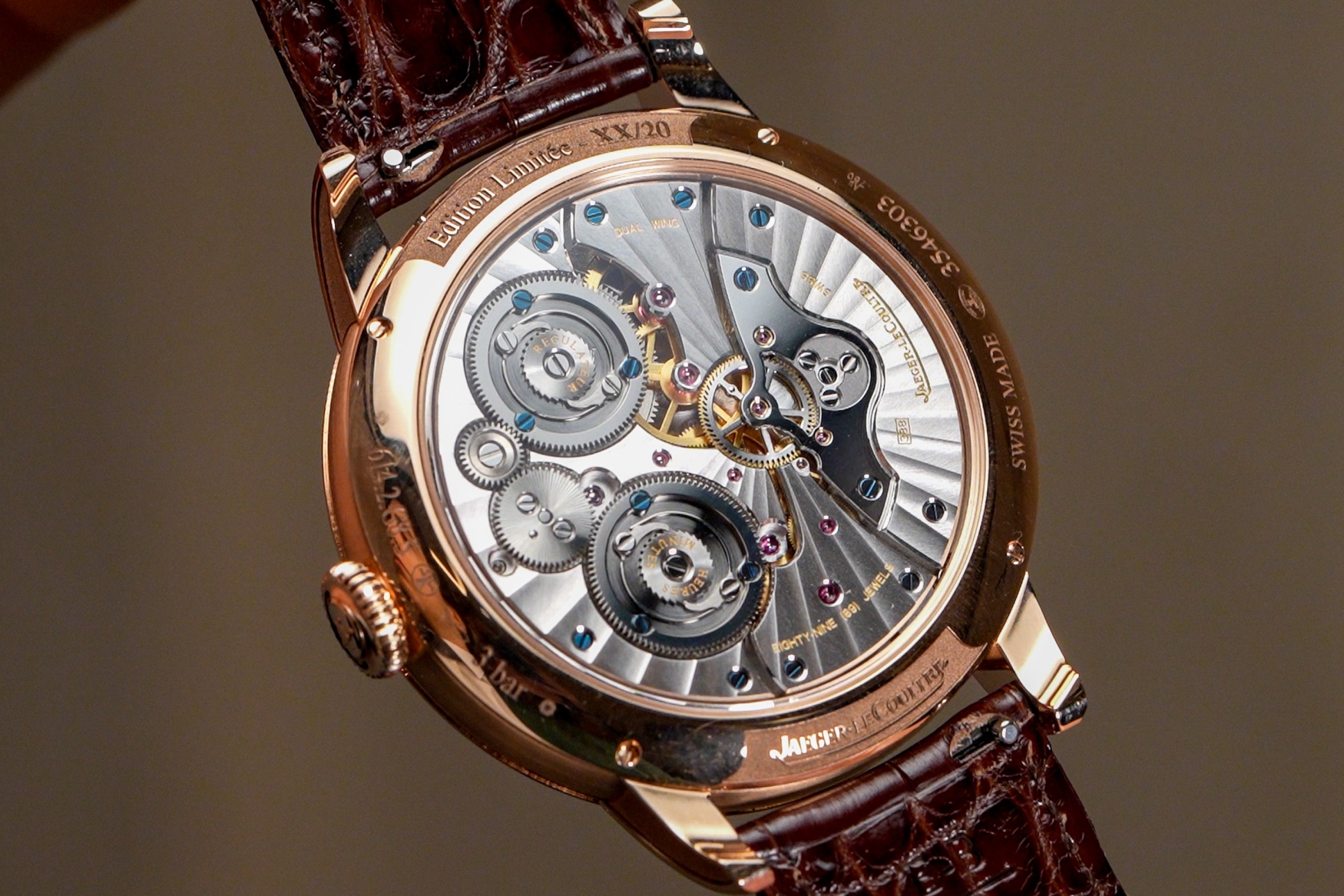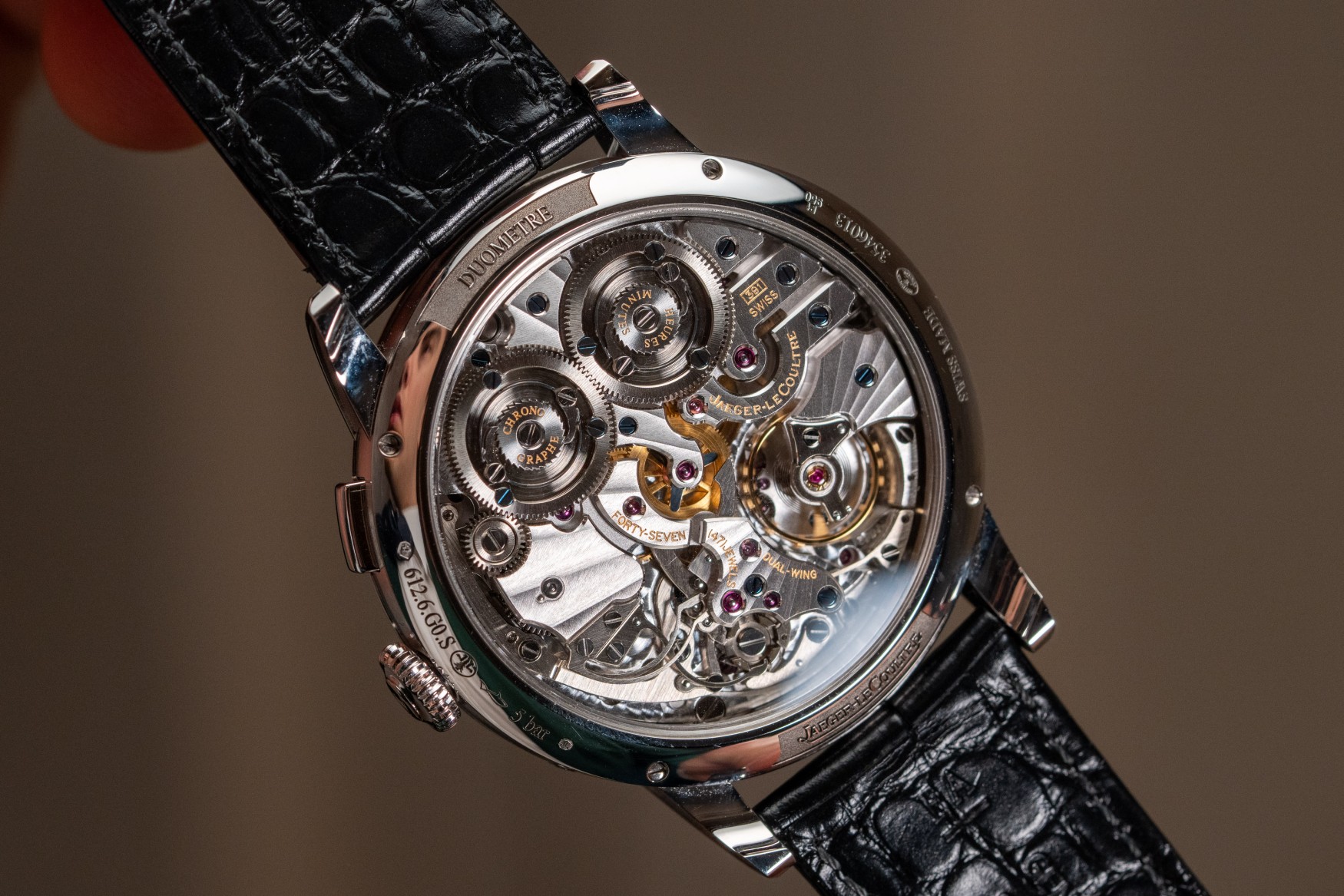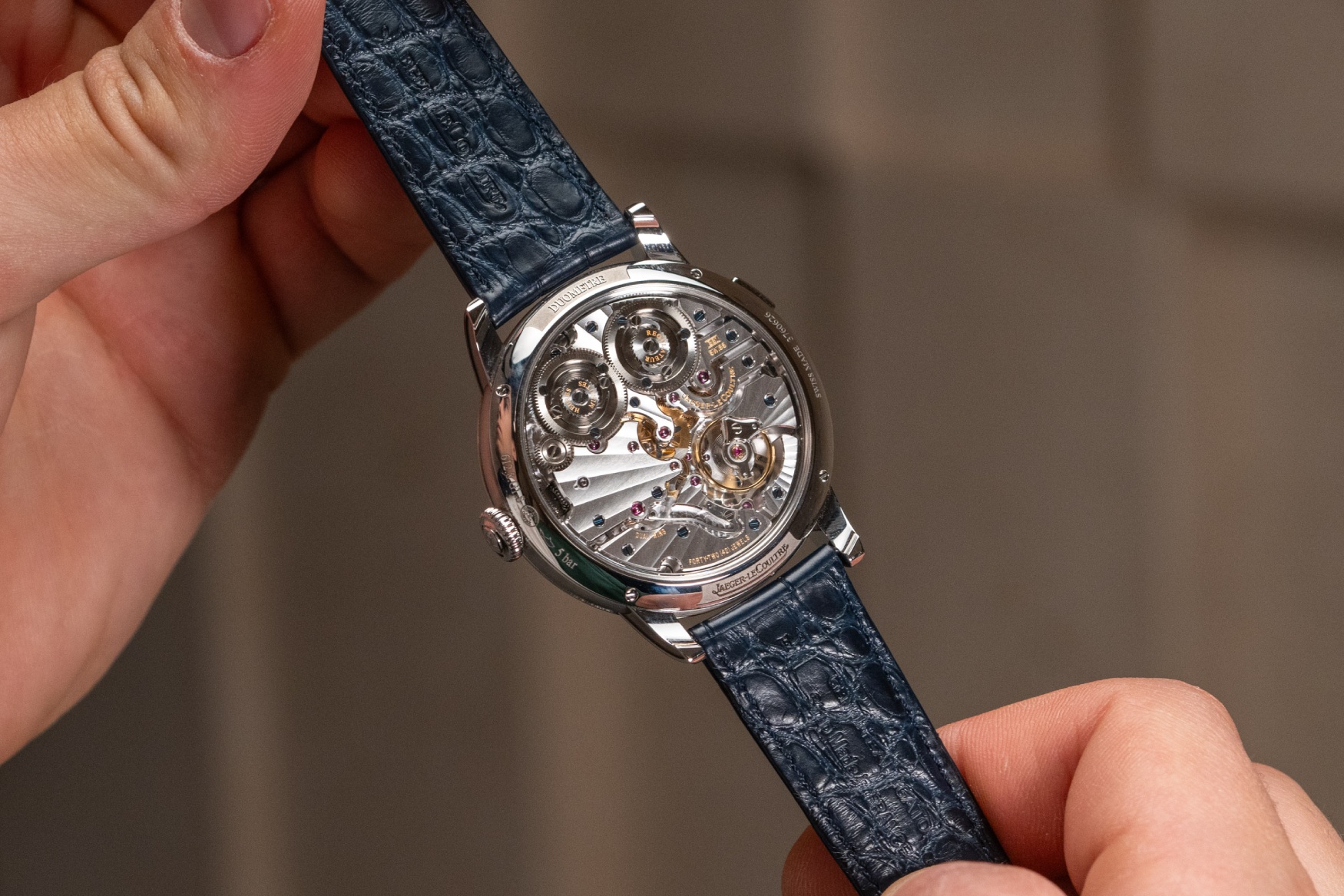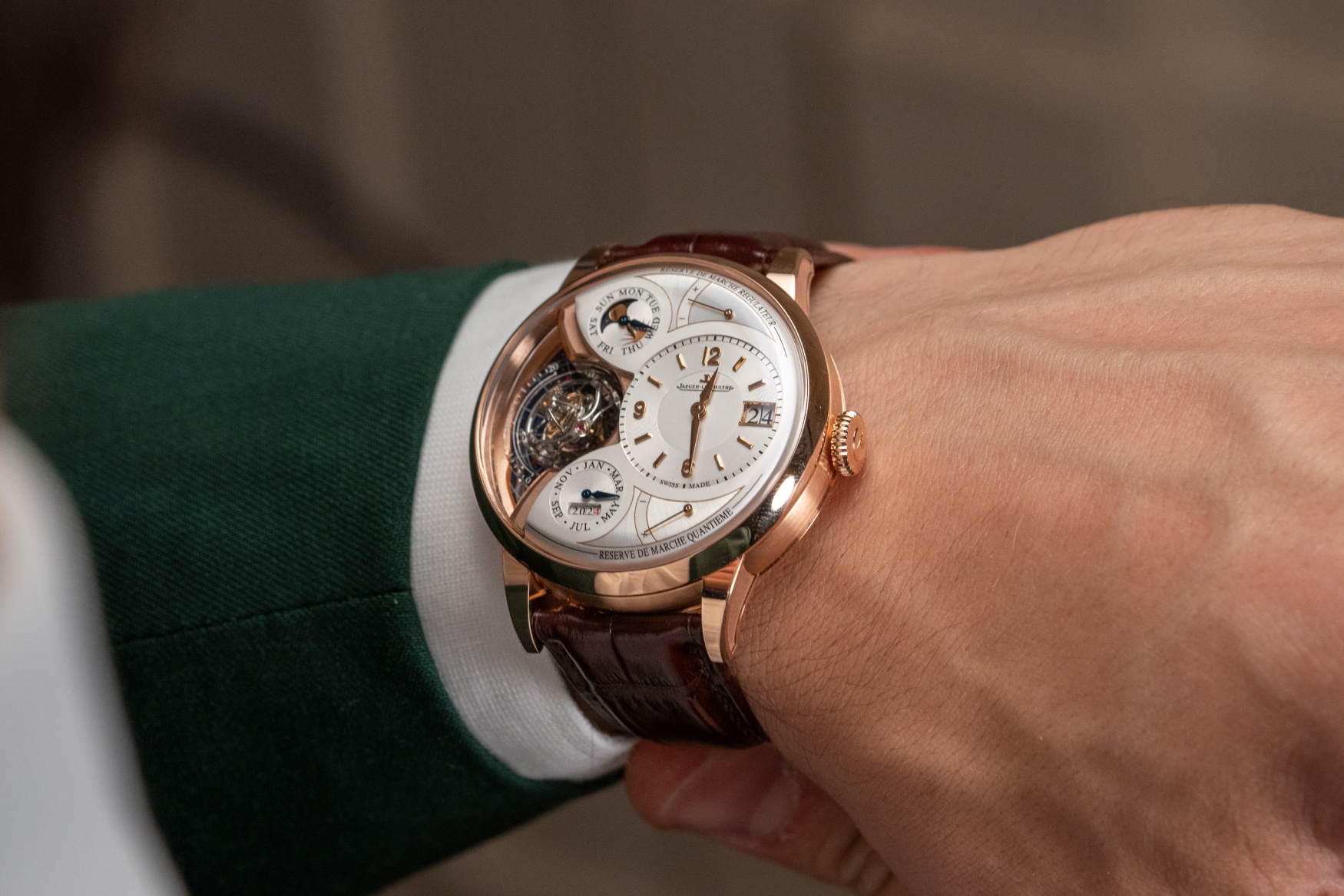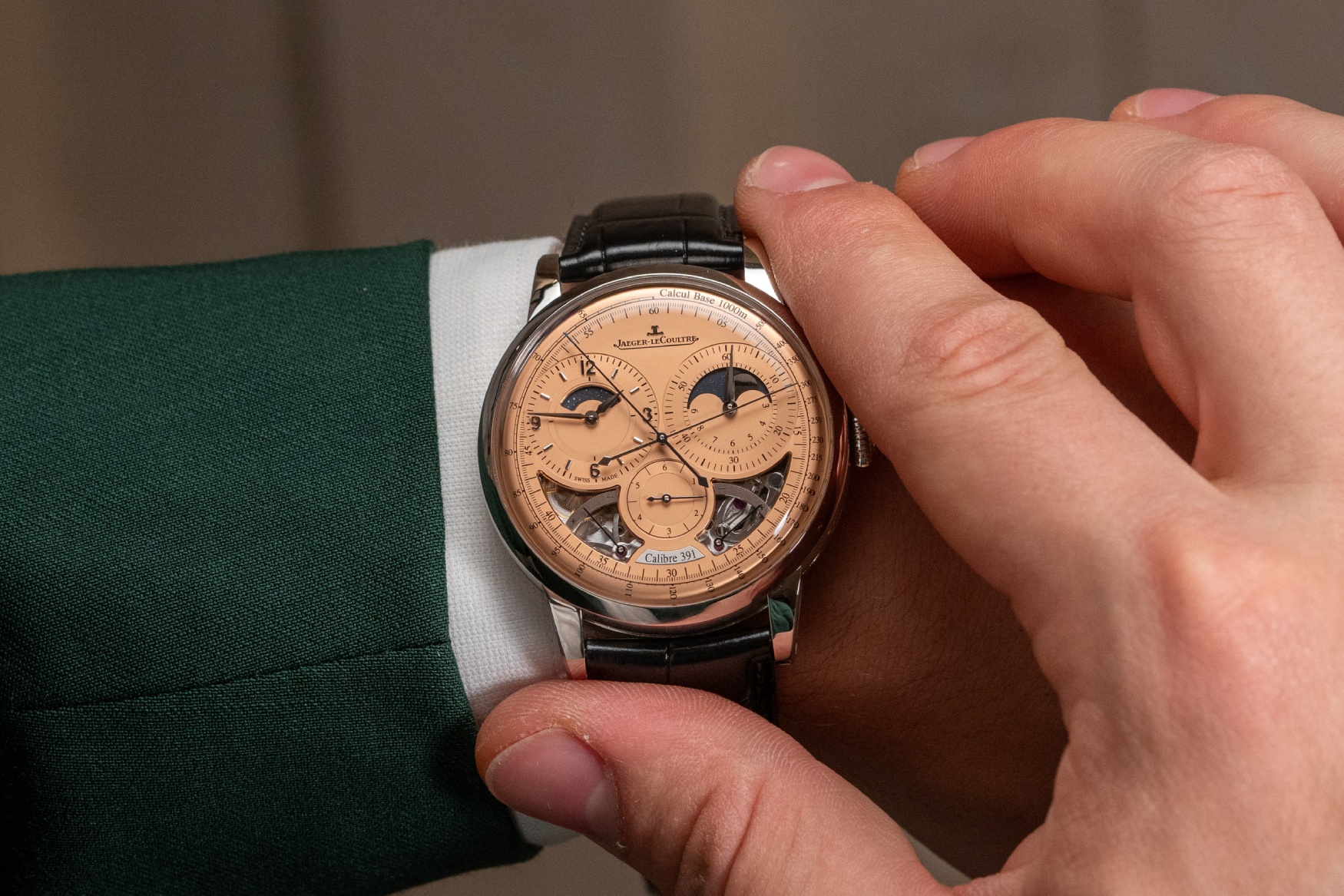The Jaeger-LeCoultre Duomètre is back, but how compelling is JLC’s haute horlogerie collection?
Borna BošnjakThe last few years of Jaeger-LeCoultre’s releases largely centred around refining, but also diversifying the catalogue. The Reverso has seen continuous improvements in wearability, while the JLC sports watch returned with the Polaris. Now, that’s not to say there was no high-end, technical development sprinkled on top, but 2024 is a year when JLC haute horlogerie comes back with a vengeance. The Jaeger-LeCoultre Duomètre was introduced in 2007, with inspiration coming from a Victorin Piguet-created pocket watch with separate barrels and going trains synchronised by a single escapement. One barrel would be tasked with providing power for the complications, while the other ensured timekeeping was kept accurate. The three pieces released this year are the entry-level Duomètre Quantième Lunaire, the Duomètre Chronograph Moon (an heir to the original Duomètre), and the headlining Duomètre Heliotourbillon Perpetual. Let me take you through the details of each of this release, and offer some thoughts on the reinvigorated collection.
The dials
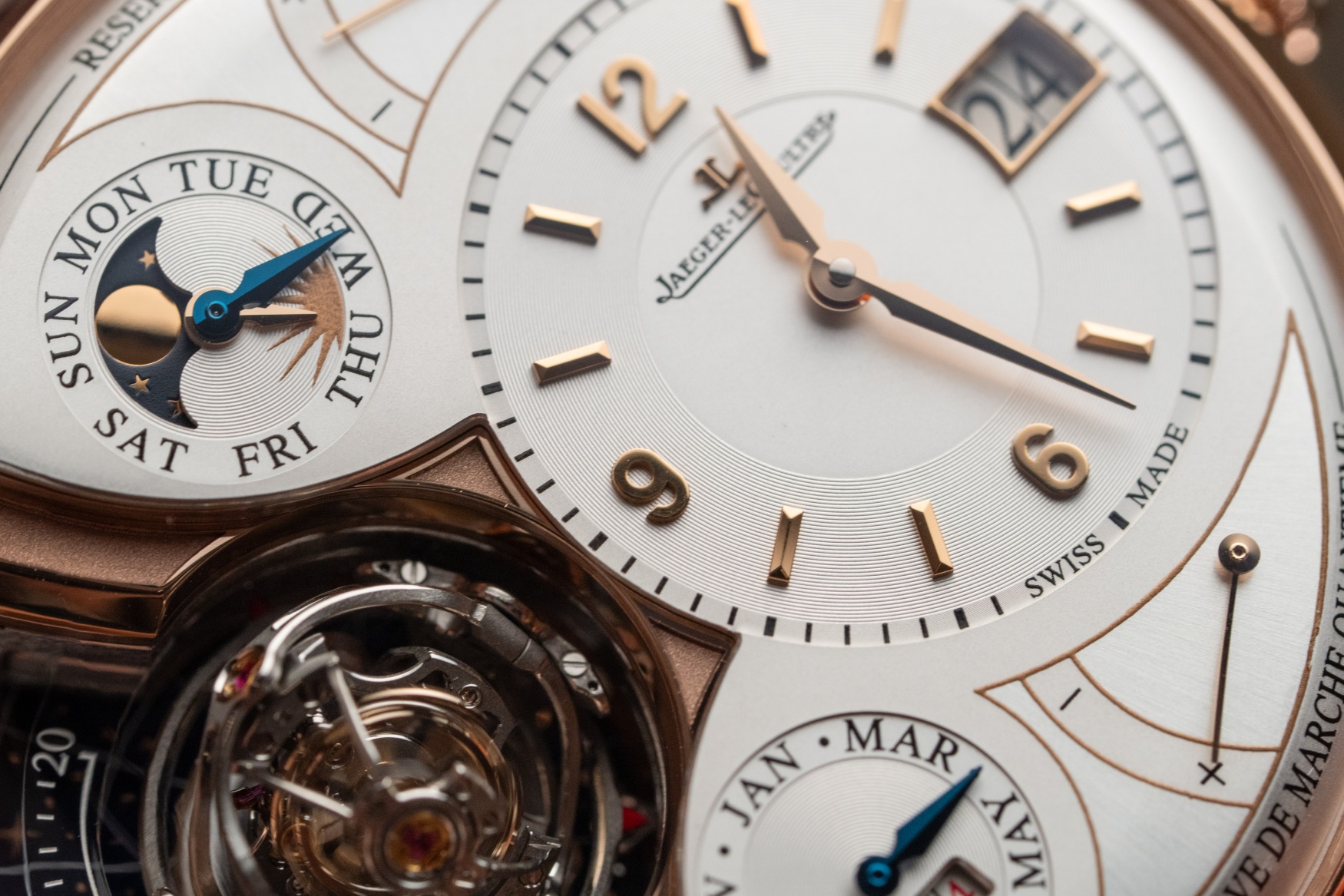
While they would certainly do well without a dial, the Duomètre collection was always an extension of Jaeger-LeCoultre’s classical watchmaking know-how, merely highlighting certain parts of their mechanism rather than fully exposing them. The Heliotourbillon Perpetual is a study in asymmetrical proportion, with the left side of the dial occupied by the large tourbillon assembly set against a blue enamel backdrop. The rest of the opaline silver surface conforms to this cut-out, with several textures and sectors making sure time-telling is not too big of a chore. To help with legibility further, the calendar sub-dials combine blued and rose gold hands, the latter matching the printing separating the dual power reserve indicator sections.
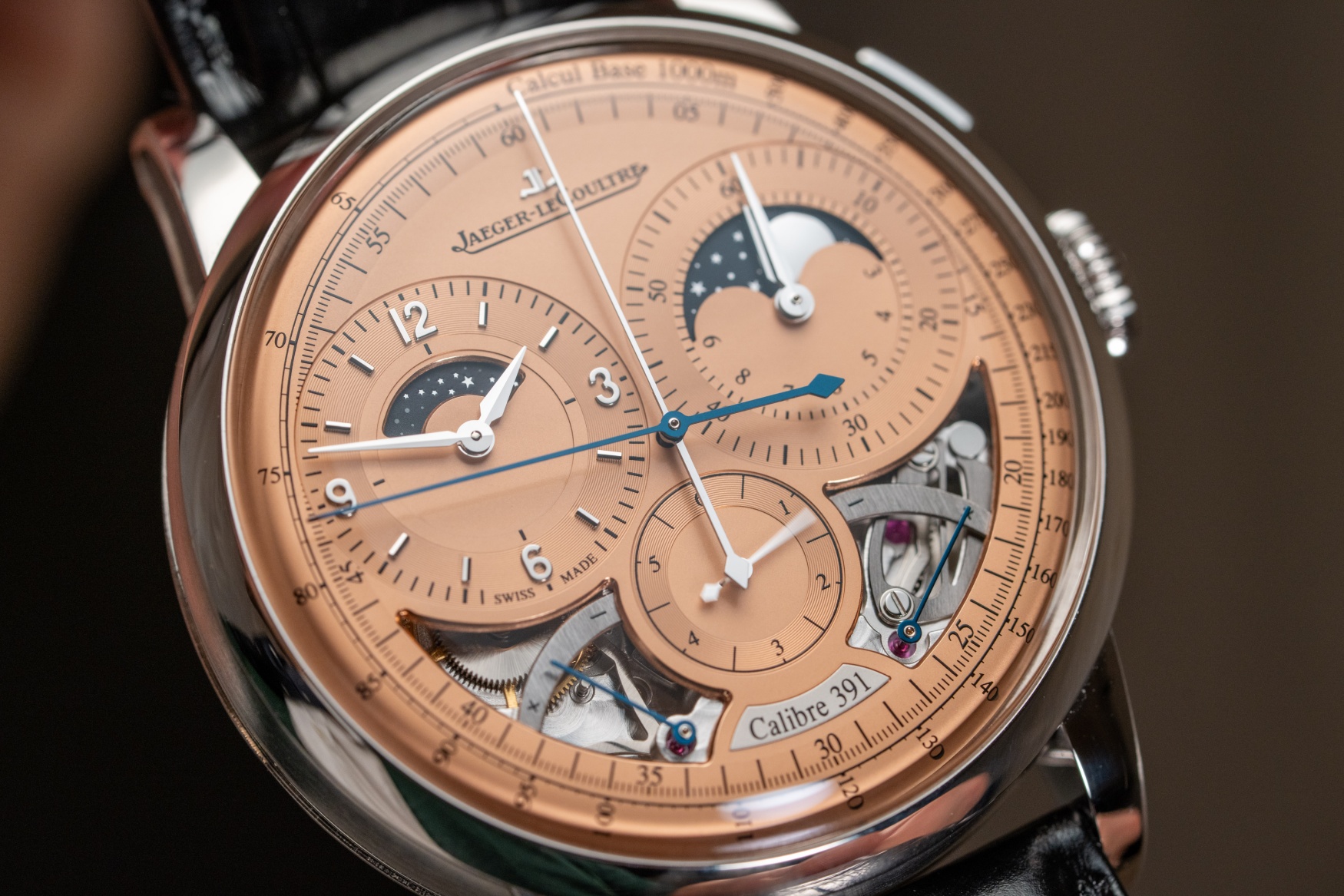
Like flexing its toned muscles under a tight-fitting shirt, the Chronograph Moon subtly shows off its guns via cut-out apertures behind the power reserve indicators, yet fitting a salmon dial into a platinum case, which gives unmistakable stealth wealth vibes. The upper left sub-dial tells the time and has an integrated day/night indicator, balanced by the chronograph hours and minutes sub-dial with a moonphase display. My favourite feature of any Duomètre has to be the foudroyante, indicating 1/6th of a second at 6 o’clock on the dial. Those two slender hands in the centre? It’s not a rattrapante chronograph, as cool as that would be, rather a central running seconds hand in silver, and the chrono seconds in blue. The combination of colours is truly stunning, though I do feel like it would make sense having all the chronograph-related hands be heat-blued as is the case with the silver-dialled model.
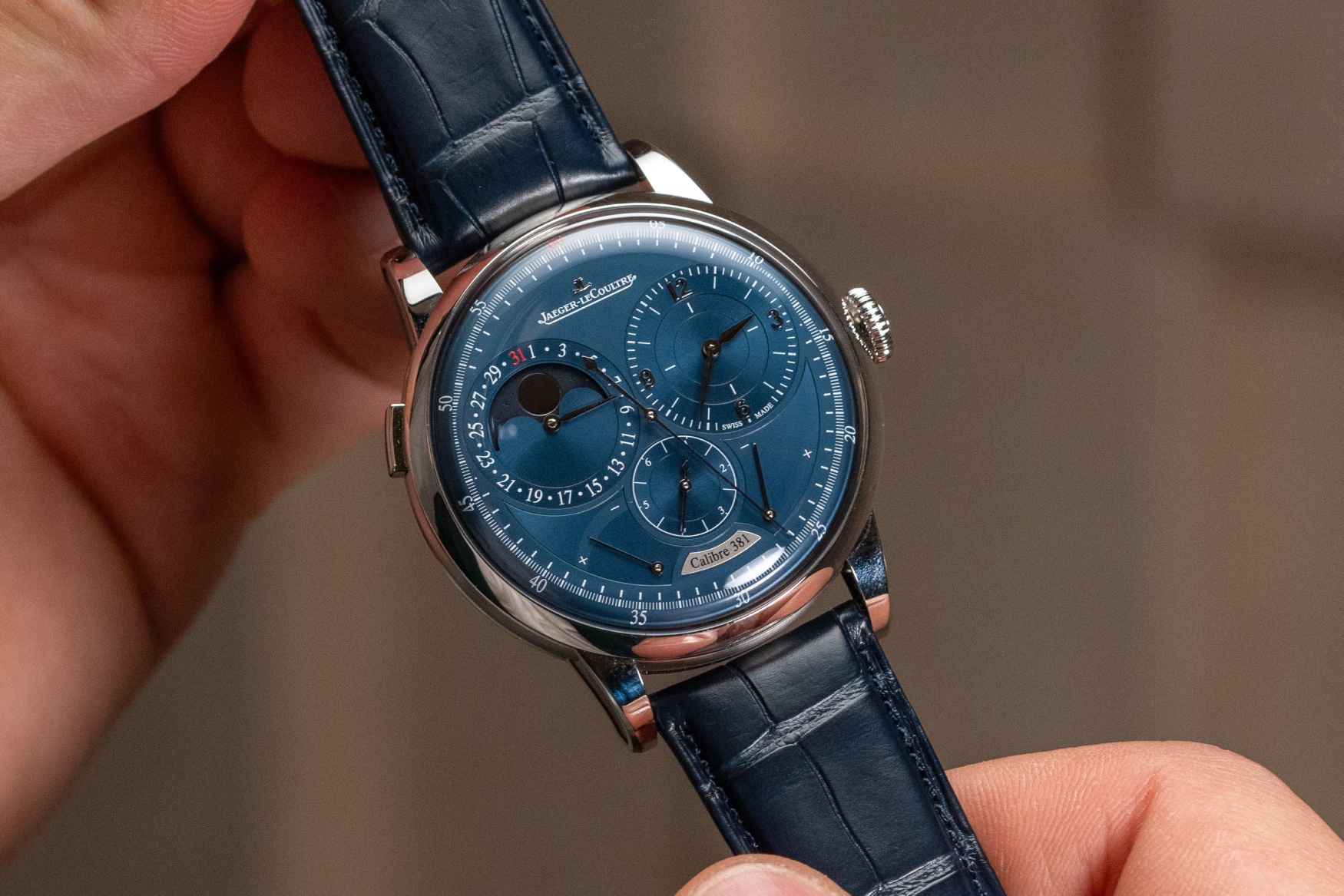
The Duomètre Quantième Lunaire is the most subdued of the three thanks to this blue with combined opaline and sunburst finishing. The dial layout flips again, with the time-display sub-dial now on the right, and the moonphase and date on the left. The dual power reserves still flank the foudroyante seconds. When compared to earlier Duomètre Quantième Lunaire models, JLC has actually closed the apertures behind the power reserves, making for a more low-key look.
The cases
-
Duomètre Heliotourbillon Perpetual Apart from the technological advancements, JLC is proud of the refinements they’ve made to the Duomètre case. They were never particularly slim-wearing pieces owing to the complications and size of the movement housed inside, and the Heliotourbillon Perpetual is actually larger than the Spherotourbillon it’s somewhat related to. The pink gold case comes in at 44mm in diameter and 14.7mm in height, topped by a box-domed sapphire crystal. The coolest part, though, has to be the sapphire window in the side of the case, putting as much of the heliotourbillon on display as possible.
Duomètre Chronograph Moon At 42.5mm in diameter and 14.2mm thick, the Chronograph Moon shrinks slightly in diameter, but actually feels more unwieldy in some ways, as it’s a similar thickness to the Heliotourbillon Perpetual but made of platinum. It echoes the finishing of its collection sibling, with expertly brushed and polished surfaces, my favourite being the lugs which are frosted in the middle, with thin reflective strips outlining their claw-like shape.
Duomètre Quantième Lunaire As was the case with the dials, the Quantième Lunaire is once again the least preposterous. It’s cased in steel, measuring 42.5mm in diameter and 13.05mm in height. The Quantième Lunaire was the most comfortable on my 15.5-16cm wrist, mostly due to the steel construction being lighter, but on average and larger wrists (as modelled by Pietro above) you’ll have no worries wearing any of the three. The finishing is performed to the same standard across the collection, though both the Quantième Lunaire and Chronograph Moon sport 50 metres of water resistance. Not that I’d recommend you go anywhere near a body of water more than ankle-deep. Just in case.
The straps
Duomètre Heliotourbillon Perpetual All three Duomètre models are fitted to alligator leather straps with small-scale alligator leather linings. They’re as comfortable as you’d expect from a high-end strap, finished in a case-matching pin buckle.
The movements
Duomètre Heliotourbillon Perpetual Before delving further into specifics of each individual movement, it’s worth discussing the way a Duomètre goes about its business in the first place. The concept revolves around JLC’s Dual-Wing technology, which sees two separate gear trains regulated by a single escapement, controlled by the jumping seconds mechanism which has become somewhat of a signature for the collection. Each gear train is powered by a separate barrel, ensuring timekeeping is not disrupted by the included complication. All of the Duomètre models also have their signature côtes soleillées, another JLC patent, describing the striping decoration emanating from the regulating organ. Reading through the press material, JLC’s descriptions of hand-bevelled and polished angles stood out, as this is only mentioned in the context of the Heliotourbillon. On closer inspection, sharp outward and just a few inward angles reveal a higher degree of finishing, though I wish JLC extended that courtesy to the other two Duomètre models.
Let’s start with the big gun, which also introduces a brand-new type of tourbillon for JLC. The secondary barrel here takes care of the Heliotourbillon and perpetual calendar with grande date complications. I can already hear some people asking: Gyrotourbillon, Spherotourbillon, Heliotourbillon – have these just become buzzwords for JLC?” Not quite. They all define different technologies, and without going into too much depth here, the Gyro and Spherotourbillons refer to different types of dual-axis tourbillons, with the latter having a spherical balance spring (unless you account for the Gyrotourbillon II which also has one). The Heliotourbillon adds a third axis, with three cages each perpendicular to each other, and a cylindrical balance spring. The first two rotate once in 30 seconds, while the third rotates once every minute, the entire titanium assembly counting an incredible 163 components but weighing a mere 0.7 grams. The JLC Calibre 388 is manually wound, and is otherwise very similar in layout to the Duomètre Spherotourbillon from a decade ago, now fitted with the new three-axis mechanism. It beats at 4 Hertz, and has 46 hours of power reserve in each barrel.
Duomètre Chronograph Moon Moving onto the chronograph Calibre 391, which has been newly built from the ground-up for the Duomètre Chronograph Moon, according to JLC. At first glance, it looks really similar to the Cal. 380 used for prior Duomètre Chronographs, though the new 391 crucially adds two new complications – the moonphase and day/night indicators. The result is an integrated, monopusher chronograph with 50 hours of power reserve per barrel. JLC also notes the openworking that was done for the Cal. 391, serving both an aesthetic and functional purpose, as it simplifies the assembly process. While the bridges and wheels aren’t quite as airy as you may expect from a properly skeletonised movement, a lot of that is due to how compact the mechanism is – JLC needs to fit two separate going trains and barrels here after all. On that note, I would love to see someone try to skeletonise those barrels with bi-directional ratchets.
Duomètre Quantième Lunaire And for the third time in this article, we get to the simplest expression of the Duomètre technology. Yes, a moonphase is a complication, but a Duomètre can’t quite be time-only, that would defeat its purpose. In any case, the Quantième Lunaire follows the same barrel layout as the Chronograph Moon, though even less internals are visible here, with a large sunray-striped plate covering the wheel trains. Just like the Chronograph Moon, the barrels store 50 hours of power reserve each, while the date function is operated by the large rectangular pusher at 10 o’clock. The Quantième Lunaire is the only new Duomètre that isn’t sporting a new movement, instead recycling the Calibre 381 first seen in 2010 with the introduction of the model.
The verdict
Duomètre Heliotourbillon Perpetual I’m really glad that Jaeger-LeCoultre is once again paying attention to the Duomètre collection. This trio covers both ends of the spectrum, with spaces in between for new models that develop new ways of using the brand’s patented tech. What I’m not so excited about, however, is the move away from German silver for the movements, which, along with the still-non-existent sharp internal and external angles, feels like a bit of a downgrade.
To the specific models, then. Without a doubt, the Heliotourbillon is the macdaddy, but it’s also just as ridiculous as it is amazing. The case is big and thick (settle down), and we haven’t even touched on the half-a-million-dollar price tag yet, either. It’s also missing my favourite aspect of a Duomètre – that foudroyante action of the 1/6th second hand. That being said, while it may not be my personal favourite from the trio, a rebirth of the Duomètre needed a headlining act, and the Heliotourbillon Perpetual is certainly that.
That leaves us with the Chronograph Moon and Quantième Lunaire. The latter is now the entry point into the Duomètre collection, but at US$44,300, you could hardly call it affordable. The patented dual-barrel technology is definitely cool, but I’m not sure the Quantième Lunaire makes the most of it. Simply by the process of elimination, that leaves us with the Chronograph Moon, which is indeed my pick of the bunch. A chronograph was the original Duomètre model, created to solve the issues presented by the famously power-sapping complication. When it’s running, so much of the dial is animated, it’s quite the sight. If I was choosing a high-end, platinum chrono to spend my money on (which I’m not, let’s be real), and for those who feel like a Daytona or Patek 5905P just aren’t quite niche or high-tech enough, I’d look to the Duomètre Chronograph Moon for the answer.
Jaeger-LeCoultre Duomètre Watches & Wonders 2024 collection pricing and availability
All the watches from the Jaeger-LeCoultre Duomètre 2024 collection are now available, with the Duomètre Heliotourbillon Perpetual being limited to 20 pieces. Price: US$44,300 (Quantième Lunaire), US$86,000 (Chronograph Moon), US$438,000 (Heliotourbillon)
Brand Jaeger-LeCoultre Model Duomètre Heliotourbillon Perpetual
Duomètre Chronograph Moon
Duomètre Quantième LunaireCase Dimensions 44mm (D) x 14.7mm (T) (Heliotourbillon)
42.5mm (D) x 14.2mm (T) (Chronograph Moon)
42.5mm (D) x 13.05mm (T) (Quantième Lunaire)Case Material 18k pink gold (Heliotourbillon)
950 platinum (Chronograph Moon)
Stainless steel (Quantième Lunaire)Water Resistance 30 metres (Heliotourbillon)
50 metres (Chronograph Moon, Quantième Lunaire)Crystal(s) Domed sapphire front, sapphire back Dial Silver opaline (Heliotourbillon)
Copper opaline (Chronograph Moon)
Blue opaline (Quantième Lunaire)Bracelet Alligator leather, case-matching clasp Movement JLC 388, in-house, manual-winding (Heliotourbillon)
JLC 391, in-house, manual-winding (Chronograph Moon)
JLC 381, in-house, manual-winding (Quantième Lunaire)Power Reserve 46 hours per barrel (Heliotourbillon)
50 hours per barrel (Chronograph Moon, Quantième Lunaire)Functions Hours, minutes, seconds, heliotourbillon, perpetual calendar with grande date (Heliotourbillon)
Hours, minutes, seconds, 1/6th seconds, chronograph, moonphase, day/night indicator, power reserves (Chronograph Moon)
Hours, minutes, seconds, 1/6th of a second, moonphase, date, power reserves (Quantieme Lunaire)Availability Now
20 pieces (Heliotourbillon)Price US$44,300 (Quantième Lunaire)
US$86,000 (Chronograph Moon)
US$438,000 (Heliotourbillon)




